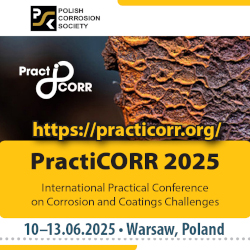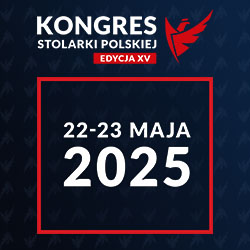Imperfekcje materiałowe i wykonawcze a przebarwienie tynku w systemie ociepleń ETICS
Open Access (Artykuł w pliku PDF)
citation/cytuj: Krause P., Olechowska M., Kosobucki Ł. Material and assembling imperfections to discoloration in the ETICS insulation system plaster. Materiały Budowlane. 2024. Volume 626. Issue 10. Pages 1-8. DOI: 10.15199/33.2024.10.01
dr hab. inż. Paweł Krause, prof Pol.Śl., Politechnika Śląska, Wydział Budownictwa
ORCID: 0000-0002-8398-1961
dr inż. Marcelina OlechowskaPolitechnika Śląska, Wydział Budownictwa
ORCID: 0000-0001-6112-8460
mgr inż. Łukasz Kosobucki, STEKRA Sp. z o.o.
Correspondence address: Ten adres pocztowy jest chroniony przed spamowaniem. Aby go zobaczyć, konieczne jest włączenie w przeglądarce obsługi JavaScript.
DOI: 10.15199/33.2024.10.01
Case study / Studium przypadku
Abstract. In recent years, the use of external thermal insulation composite systems (ETICS) has increased due to their thermal properties and the costs of construction works. Building facades are constantly exposed to the negative impact of many different factors, which may lead to the deterioration of their technical condition and lower aesthetic value. The article describes issues related to selected irregularities of the ETICS system affecting the aesthetic side of the façade. In the analyzed insulation systems, irregularities related to the use ofmineral wool and their negative impact on the thin-layer plaster were identified.
Keywords: ETICS; mineral wool; interlayer condensation.
Streszczenie. W ostatnich latach zwiększyło się zastosowanie zewnętrznych systemów izolacji cieplnej (ETICS) ze względu na ich właściwości termiczne i koszty realizacji robót budowlanych. Elewacje budynków są stale narażone na negatywne oddziałanie wielu zróżnicowanych czynników, które mogą prowadzić do pogorszenia ich stanu technicznego oraz obniżenia wartości estetycznej. W artykule opisano zagadnienia związane z wybranymi nieprawidłowościami systemu ETICS wpływającymi na stronę estetyczną elewacji. W analizowanych układach ociepleń rozpoznano nieprawidłowości związane z zastosowaniem wełny mineralnej i ich negatywny wpływ na cienkowarstwową wyprawę tynkarską.
Słowa kluczowe: ETICS; wełna mineralna; kondensacja międzywarstwowa.
Literature
[1] Dickson T, Pavia S. Energy performance, environmental impact and cost of a range of nsulation materials. Renew. Sustain. Energy ReV; 2021; 110752.
[2] Väntsi O, Kärki T. Mineral wool waste in Europe: a review of mineral wool waste quantity, quality, and current recycling methods. Journal of Material Cycles and Waste Management. 2014; 67 – 72.
[3] MüllerA, Leydolph B, Stanelle K. Recyclingmineral wool waste – Technologies for the conversion of the fiber structure, Part 1. Interceram. 2009; 58: 378-381.
[4] Füchsl S, Rheude F, Röder H. Life cycle assessment (LCA) of thermal insulation materials: a critical review. Cleaner Materials. 2022.
[5] Warunki Techniczne Wykonania i Odbioru Robót Budowlanych. Zabezpieczenia i izolacje, zeszyt 8: Złożone systemy ocieplania ścian zewnętrznych budynków (ETICS) z zastosowaniem styropianu lub wełny mineralnej i wypraw tynkarskich. Instytut Techniki Budowlanej, 2023, ISBN: 978- 83-249-8658-3.
[6] Parracha J, Borsoi G, Flores-Colen I, Veiga R, Nunes L, DionísioA, Gomes M, Faria P. Performance parameters of ETICS: Correlating water resistance, bio-susceptibility and surface properties. Construction and Building Materials Volume 272, 2021; 15.
[7] Rokiel M. System ETICS – jak uniknąć problemów eksploatacyjnych – wybrane zagadnienia. Inżynier Budownictwa. 2023.
[8] Runkiewicz L, Sieczkowski J, Kopyłow O. Okresowe oceny stanu technicznego elewacji budynków. Cz. 1. Wymagania ogólne. Builder. 2020; /24/7: 15 – 17.
[9] Malanho S, VeigaM. Bond strength between layers of ETICS – Influence of the characteristics of the components (mortars and insulationmaterials). Journal of Building Engineering. 2019; DOI: 10.1016/j.jobe.2019.101021.
[10] Amaro B, Saraiva D, Brito J, Flores-Colen I. Inspection and diagnosis system of ETICS on walls. Construction and Building Materials. 2013; 47: 1257 – 1267.
[11] Flores-Colen I, De Brito J, Reitas V. Stains in facades rendering – diagnosis and maintenance technique classification inspection. Constr. Build. Mater. 2008; 22 (3): 211 – 221.
[12] Ślusarek J, Orlik-Kozdón B, Bochen J, Muzyczuk T. Impact of the imperfection of thermal insulation on structural changes of thin-layer façade claddings in ETICS J. Build. Eng. 2020; 32.
[13] Blocken B, Derome D, Carmeliet J. Rainwater runoff from building facades: A review. Building and Environment. 2013; DOI: 10.1016/j.buildenv. 2012.10.008.
[14] Širok B, Blagojević B, Bullen P.MineralWool, Production and Properties. Woodhead, England. 2008.
[15] Kupczewska-Dobecka M, Czerczak S, Konieczko K. Wełna mineralna. Zagrożenia dla użytkowników, stan prawny i zasady bezpiecznego postępowania. InstytutMedycyny Pracy im. prof. dra med. J. Nofera w Łodzi. ISBN 978-83-63253-16-5. Łódź 2019.
[16] Biały W, Maruszewska E, Kołodziej S. Product defectiveness analysis using methods and tools of quality engineering. Cross-border exchange of experience production engineering using principles ofmathematics: Modern mathematical methods in engineering. Ostrava, 2018; 7-16. ISBN 978-80- 248-4136-6.
[17] Kubacki J, Mańka M, Śmiszek-Lindert W. The use of spectroscopic and microscopic techniques for the analysis of fibrous insulation. Conference: II SymposiumThermo-Hydro-Insulation, Sosnowiec, Poland 2014.
[18] Śmiszek-Lindert W, Bajorek A, Kubacki J. Analiza złożonych materiałów o strukturze włókien mineralnych w oparciu o nieinwazyjne metody spektroskopowe. Chemik. 2015; vol. 69, nr 7: 411 – 414.
[19] Nagy B, Simon T, Nemes R. Effect of built-in mineral wool insulations durability on its thermal and mechanical performance J. Therm. Anal. Calorim. 2020; 139 (1) : 169 – 181.
[20] Brito V, Gonçalves T. D, Faria P. Coatings applied on damp buildings substrates: performance and influence on moisture transport J. Coat. Technol. Res., 8. 2011; 513 – 525.
[21] Kirkelbach D, Holm A, Künzel H. Influence of temperature and relative humidity on the durability of mineral wool in ETICS. In: 10th International conference on durability of building materials and components, Lyon; 2005.
[22] Lakatos Á. Moisture induced changes in the building physics parameters of insulation materials. Sci Technol Built Environ. 2016; 22: 252–60.
[23] Jerman M, Cerny R. Effect of moisture content on heat and moisture transport and storage properties of thermal insulation materials. Energ Build. 2012; 53: 39 – 46.
[24] Simon TK, Mlinárik L, Vargha V. Effect of water vapor on the compressive strength of amineralwool insulation board. J Build Phys. 2015; 39: 285 – 94.
[25] Buszko A. Wełna mineralna i jej odporność na wodę. Inżynier Budownictwa. 2020; 54-57.
[26] PN-EN ISO 13788:2013-05 Cieplno-wilgotnościowe właściwości komponentów budowlanych i elementów budynku. Temperatura powierzchni wewnętrznej konieczna do uniknięcia krytycznej wilgotności powierzchni i kondensacji międzywarstwowej. Metody obliczania.
[27] Šadauskienė J, Šeduikytė L.Moisture accumulation in renovated external walls. In The International Scientific Conference. Innovative Materials, Structures and Technologies. 2014; 151 – 156.
[28] Stazi F, Tittarelli F, Politi G, Di Perna C,Munafo P. (2014).Assessment of the actual hygrothermal performance of glass mineral wool insulation applied 25 years ago in masonry cavity walls. Energy and Buildings. 2014; 68: 292 – 304.
[29] Künzel HM. Effect of interior and exterior insulation on the hygrothermal behaviour of exposed walls.Materials and Structures. 1998; 31: 99 – 103.
Received: 10.06.2024 / Artykuł wpłynął do redakcji: 10.06.2024 r.
Revised: 08.07.2024 / Otrzymano poprawiony po recenzjach: 08.07.2024 r.
Published: 22.10.2024 / Opublikowano: 22.10.2024 r.
Materiały Budowlane 10/2024, strona 1-8 (spis treści >>)






























